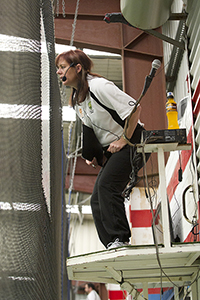The Rules
RULE
1. - FIELDING A TEAM
RULE
2. - THE GAME
RULE
3. - UNIFORMS
RULE
4. - THE TOSS
RULE 5. - PLAYING EQUIPMENT
RULE 6. - THE UMPIRE
RULE 7.
- ARRIVAL/LATE PLAYER(S)
RULE
8. - PLAYER SHORT / SUBSTITUTES / INJURED PLAYERS
RULE 9.
- FIELD PLACEMENT.
RULE
10. - PLAY BALL/LIVE BALL/DEAD BALL.
RULE 11.
- SCORING.
RULE 12.
- NO BALL.
RULE
13. - WIDE AND LEG SIDE WIDE BALLS.
RULE 14.
- BOWLER CHANGING DIRECTION/STYLE.
RULE 15. -
BALL LEAVING THE PLAYING AREA.
RULE
16. - APPEALS FOR DISMISSALS.
RULE
17. - DISMISSALS.
RULE
18. - INTERFERENCE.
RULE 19.
- MISCONDUCT.
RULE 20. - ORDER OFF.
RULE 21. -
ILLEGAL COURT ENTRY/EXIT.
RULE 22.
- RUNNERS.
RULE 23. - END OF
GAME.
RULE 24. - MIXED GAMES.
SECTION 2 - AICF STANDARDS
1.
COURT
LAYOUT AND DIMENSIONS.
2. EQUIPMENT.
SECTION 3 - MANAGEMENT PROCEDURES
1.
GAME FEES.
2. LATE STARTS.
3. PREMIERSHIP AND BONUS POINTS.
4. LADDER POSITION.
5. FINALS QUALIFICATIONS.
6. DRAWN FINAL.
SECTION 4 - VARIATIONS.
SECTION 5 - UMPIRE SIGNALS.
Umm . . out?

Another Section
Lorem Ipsum is simply dummy text of the printing and typesetting industry.
Lorem Ipsum has been the industry’s standard dummy text ever since the 1500s.
An analysis and explanation (where possible) of the Rules of Indoor Cricket
Umpires and Umpiring
And now, a look at Umpires and all that they do - and to be honest, they really do heaps. Worthy of their own dedicated page methinks.
First we've got the actual rules pertaining to a game's umpire, then some discussion on umpiring, tips and tricks, and how to make yourself into a better umpire.
RULE 6. THE UMPIRE
A. Before each game, an umpire will be appointed. The umpire's official role, according to the AICF, is "to adjudicate the rules of the game with absolute impartiality". Not a problem.
B. Despite wishes to the contrary, teams will of course have no say in the appointment of an umpire for their game. Umpires can try to talk management out of giving them particular teams to umpire, but that's another story (and it goes on behind the scenes, so no-one is the wiser). Further comment on that particular point later this page.
C. The AICF tells us that "the umpire may only be changed at the discretion of the duty manager or tournament organiser" - under what conditions this would occur it doesn't say, but I can only imagine it would be if a team complained long and loud enough. I should add, finding a team which hasn't at some time complained about an umpire is no easy task .... ... .. . but anyway ....
D. The umpire's decision during a game is final. Despite the apparent belief of many players, no dispute, written or otherwise, will alter the result. Nor will dispute or dissent alter a decision, no matter how long and loud.
E. The umpire will of course be the sole judge of everything he/she has to adjudicate on, including fair and unfair play.
F. The captain of the fielding side or the batsman at the wicket may seek explanation of an umpire's decision. Once the umpire has given his/her explanation, further talking to, at or about the umpire or the decision may be penalised.
Okay, all the above seems simple enough. And the rules are fairly simple, and easy to learn.
So why is there such a vast range in the abilities of umpires (or perhaps more accurately, why is there such a vast range in the performance of umpires)? And can a so-so umpire become a good umpire, or even a "great" umpire?
Having played and umpired this game since its earliest days, I believe I have at least part of the answers to the above, and some tips to help anyone become a better umpire .......
The most common weaknesses in an umpire's performance
1. Blindness (okay, just kidding really, but an umpire does need reasonable sight)
2. an apparent lack of knowledge of some of the rules
3. consistenly missing obvious breaches of the rules, especially front-foot no-balls.
4. guessing, and giving decisions based on those guesses
5. anticipating the outcome of a play
6. not watching the whole game
7. being unduly influenced by the loudness and confidence of appeals
8. inconsistency, especially in judgement of run-outs, wides and no-balls (too high).
9. timidity when giving decisions
10. lack of, or weak excuses for, hand-signals
11. lack of explanations for unusual or unexpected decisions
12. too "chummy" with players
... and a little discourse on the possible role of humour in umpiring.
Click here for my explanation and tips to overcome these weaknesses
